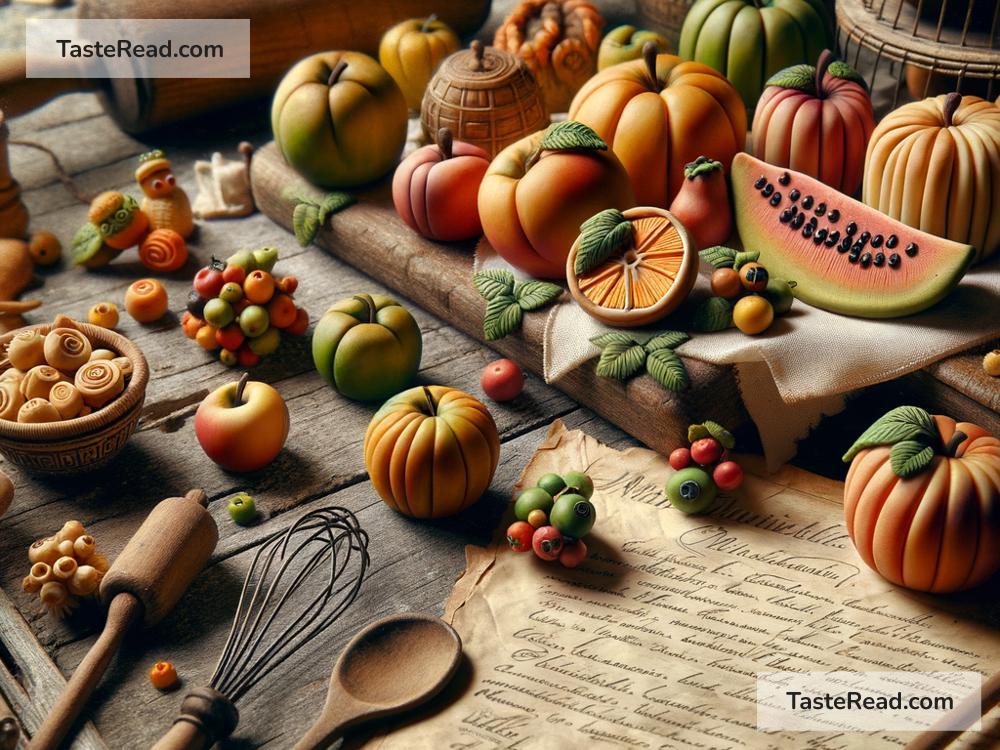The Sweet History of German Marzipan
Marzipan is a delicious treat made from almonds, sugar, and a little bit of water or syrup. It is soft, sweet, and can be shaped into anything you can imagine, from fruits and animals to buildings and decorations. But have you ever wondered where marzipan comes from? Let’s take a look at the history of marzipan in Germany and learn why it is such an important sweet in this country.
Marzipan’s Origins: A Mystery
The origins of marzipan are a little unclear, as many countries claim they invented it. Some say marzipan was first created in Persia (modern-day Iran) over 1,000 years ago. Others believe it originated in Italy or Spain during the Middle Ages. What historians do know is that marzipan spread across Europe during this time, especially after almonds were introduced to the region through trade with the Middle East.
Marzipan became popular because almonds were considered luxurious, and sugar was expensive. Combining the two ingredients made marzipan a special treat that was usually reserved for kings, queens, and wealthy families. Eventually, marzipan made its way to Germany, where it found a permanent home.
Lübeck: The Heart of German Marzipan
Today, the northern German city of Lübeck is known as the heart of German marzipan. This charming city, located near the Baltic Sea, has a long history of making the finest marzipan. It became famous for its marzipan during the 14th century, though no one knows exactly how or when the craft began there. What we do know is that Lübeck marzipan grew in popularity and was soon enjoyed all over Germany.
One legend claims that Lübeck marzipan became popular during a time of famine. According to the story, there was little food in the city, and people were starving. The city leaders asked the bakers to feed the population, but they had no flour. Instead, they used what was available—almonds and sugar—to create marzipan. It is unclear if this story is true, but it highlights the resourcefulness of the city’s bakers and their ability to turn simple ingredients into something extraordinary.
Lübeck marzipan is still considered some of the best in the world, thanks to high-quality ingredients and strict production standards. It is so beloved that the city has laws governing how marzipan can be made. For example, Lübeck marzipan must contain at least 70% almonds, while only 30% can be sugar.
Marzipan in Literature and Art
As marzipan became more popular in Germany, it started to appear in art and literature. During the Renaissance, marzipan was often shaped into detailed figures or painted like a work of art. Wealthy families used marzipan creations as table decorations during dinner parties. These figures showcased their wealth and sophistication while delighting guests with beautiful—and edible—art.
In the 18th century, marzipan was mentioned in German literature, particularly by famous poets and writers. Some wrote about the sweetness of marzipan, while others described how it was used to celebrate special occasions. Around this time, marzipan also became associated with Christmas and other holidays, traditions that remain strong in Germany today.
Marzipan Makers: A Masterful Craft
In Germany, making high-quality marzipan is considered an art. There are skilled craftsmen and women who dedicate their lives to perfecting this sweet treat. Many of these marzipan makers work in family-owned businesses that have been passed down through generations.
One of the most famous companies producing marzipan is Niederegger, which was founded in Lübeck in 1806. Niederegger marzipan is world-renowned for its taste and unique almond flavor. The company follows traditional methods to ensure its marzipan meets the highest standards. Visitors to Lübeck can enjoy Niederegger marzipan at the company’s café, which also has a marzipan museum showcasing beautiful creations and explaining the history of marzipan.
Marzipan Today: A Global Favorite
While marzipan began as a luxurious treat for the wealthy, it is now enjoyed by people all over the world. In Germany, marzipan remains deeply connected to the country’s culture and traditions. During Christmas, marzipan is often shaped into stars, hearts, or animals, and it is used to decorate cakes and cookies. Marzipan fruits, such as miniature apples or bananas, are especially popular in Germany and make excellent gifts.
Germany also celebrates marzipan in other ways. For example, Lübeck hosts marzipan-themed events where visitors can sample sweet treats and learn how marzipan is made. And in the Fall, Germans pair marzipan with other seasonal flavors like chocolate and cinnamon.
A Legacy of Sweetness
The history of German marzipan shows how a simple recipe of almonds and sugar can create something extraordinary. From its mysterious beginnings to its beloved status in Germany today, marzipan has delighted people for centuries. It is more than just a sweet treat—it is a symbol of tradition, creativity, and celebration. Whether you are eating marzipan in Lübeck or at home anywhere in the world, you are enjoying a piece of history that continues to inspire Germans and marzipan lovers everywhere.
So the next time you bite into a piece of marzipan, take a moment to savor its rich history—and its irresistible sweetness!


